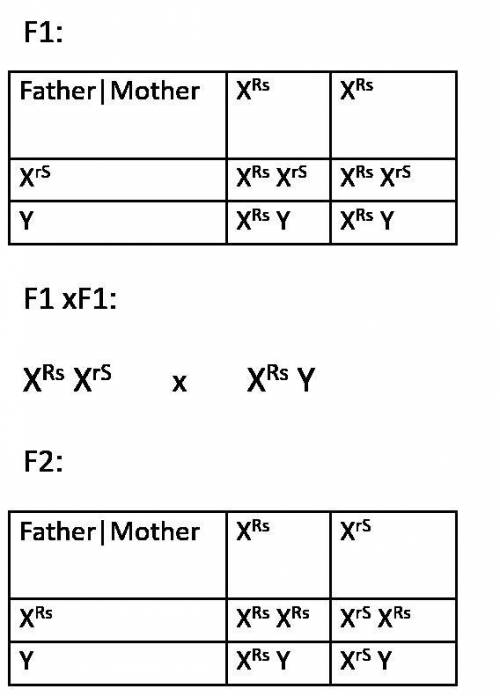
Biology, 12.09.2019 21:20 Morghurley2000
In drosophila, males from a true-breeding stock with raspberry-colored eyes were mated to females from a true-breeding stock with sable-colored bodies. in the f1 generation, all the females had wild-type eye and body color, while all the males had wild-type eye color but sable-colored bodies. when f1 males and females were mated, the f2 generation was composed of 216 females with wild-type eyes and bodies, 223 females with wild-type eyes and sable bodies, 191 males with wild-type eyes and sable bodies, 188 males with raspberry eyes and wild-type bodies, 23 males with wild-type eyes and bodies, and 27 males with raspberry eyes and sable bodies. explain these results by diagramming the crosses, and calculate any relevant map distances.

Answers: 2
Another question on Biology

Biology, 21.06.2019 21:00
Which of these serves as a reference for comparison during a scientific investigation? a)outcome variable (dependent variable) b) test variable (independent variable) c)control group d)hypothesis
Answers: 1

Biology, 22.06.2019 00:40
As the human population grows, what happens to our natural-resource requirements? o they increase o they decrease o they do not change. they go in cycles
Answers: 2

Biology, 22.06.2019 06:20
What makes a dominant allele different from a recessive allele
Answers: 2

Biology, 22.06.2019 10:30
Which of the following is a true statement? question 8 options: populations can't evolve, only individual organisms. individuals have adaptations that can change over time. individuals have traits that may or may not make them successful at reproduction. individuals evolve to have adaptations.
Answers: 1
You know the right answer?
In drosophila, males from a true-breeding stock with raspberry-colored eyes were mated to females fr...
Questions

Mathematics, 26.01.2021 21:10







English, 26.01.2021 21:10


English, 26.01.2021 21:10





Advanced Placement (AP), 26.01.2021 21:10


Mathematics, 26.01.2021 21:10

Computers and Technology, 26.01.2021 21:10


Social Studies, 26.01.2021 21:10








